Primary Care First (PCF) participants need to pay attention There is a renewed emphasis on advancing primary care. Primary care serves as the front door to the overall healthcare system, and early and accurate diagnosis can lead to fewer hospital admissions – a metric that has become especially important during the pandemic. With the January 2022 launch of Primary Care First Cohort 2, it is important to review what steps healthcare organizations should take to ensure the best outcomes. To be successful, PCF participants must pay special attention to three aspects: tracking the beneficiary population, obtaining physician buy-in, and ensuring timely access to performance metrics. 1. Tracking Beneficiary Population Tracking patients participating in the PCF program is necessary to build patient navigation processes and monitor care outcomes. However, this can be challenging for many providers as internal EMR solutions do not provide complete data across the entire continuum of care f...
